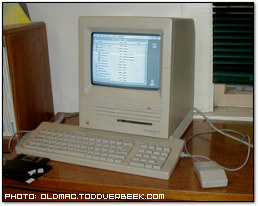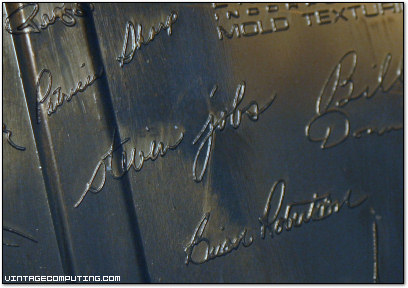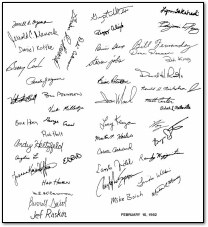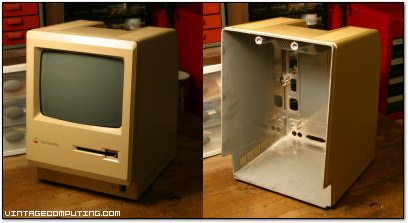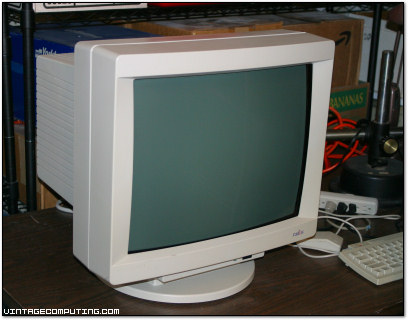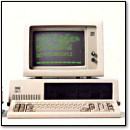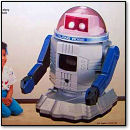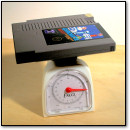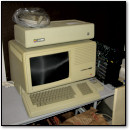 For the last two years, Apple co-founder Steve Wozniak has toiled away in secrecy on a brand new computer system, which he announced today in a surprise press release. The machine, sure to stun the computer industry, carries the torch of the classic Apple II computer line and brings with it a massive installed user base. Wozniak calls his creation the Apple IIpc — a fitting name for a modern update of his venerable Apple II design that sports both a 2 GHz processor and full compatibility with all Apple II software and accessories.
For the last two years, Apple co-founder Steve Wozniak has toiled away in secrecy on a brand new computer system, which he announced today in a surprise press release. The machine, sure to stun the computer industry, carries the torch of the classic Apple II computer line and brings with it a massive installed user base. Wozniak calls his creation the Apple IIpc — a fitting name for a modern update of his venerable Apple II design that sports both a 2 GHz processor and full compatibility with all Apple II software and accessories.
In a special email to the vintage computing press, Wozniak laid out the details. “I’m emailing this to you frist [sic] because I know you’re the ones who supported me all these years,” he writes. “After all, I’m counting on you to make this new launch a success.”
A Modern Marvel
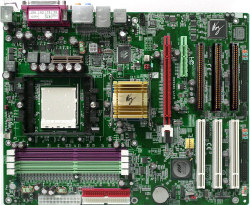 Powered by a new 2.0 GHz 6502-compatible chip from WDC, the IIpc will retain full backward-compatibility with both Apple II and Apple IIgs software. In a further nod to the past, the computer will ship with three Apple II slots (in addition to the three PCI-X slots on the board) and will include user ports for Apple II keyboards, mice, paddles, and numeric keypads. The IIpc will support memory up to four gigabytes, although Wozniak plans on shipping the first model with only 1GB of RAM.
Powered by a new 2.0 GHz 6502-compatible chip from WDC, the IIpc will retain full backward-compatibility with both Apple II and Apple IIgs software. In a further nod to the past, the computer will ship with three Apple II slots (in addition to the three PCI-X slots on the board) and will include user ports for Apple II keyboards, mice, paddles, and numeric keypads. The IIpc will support memory up to four gigabytes, although Wozniak plans on shipping the first model with only 1GB of RAM.
Perhaps the biggest bombshell in this announcement deals with the IIpc’s new 64-bit CPU. WDC, suppliers of processors for the Apple IIc and IIgs in the past, developed a special chip specifically for this project called the W65T64 Terbium Pro. Long thought to be vaporware by the computer press since it had no known application, the Terbium Pro has finally materialized, although it’s still in the late prototype stages.
“I’m extremely pleased with WDC on this project,” Wozniak writes. “Unlike modern emulation methods, the W65T64 runs Apple II code natively at 2.0GHz, along with more advanced software.”
The IIpc was initially designed as a drop-in replacement for the Apple IIe motherboard, but Wozniak soon realized that the antique IIe case and power supply would severly limit his design’s capabilities. He has commissioned a completely new all-in-one case from Jerry Manock specifically for the Apple IIpc. Manock, an Apple veteran, previously designed the Apple II, Apple III, and Macintosh cases. “Jerry and I work together like magic,” writes Wozniak, “and he’s got an incredible design for a new case that we’ll be testing soon.”
Apple’s Take
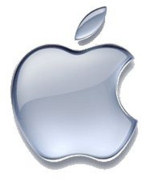 So what does Apple, Inc. and Steve Jobs think of all this? “Every time I talk to Steve, he tells me they still receive over 5,000 calls a day at Apple asking for an upgrade to the Apple IIe,” Wozniak writes, “So he’s happy that I’ll be getting them off his back.”
So what does Apple, Inc. and Steve Jobs think of all this? “Every time I talk to Steve, he tells me they still receive over 5,000 calls a day at Apple asking for an upgrade to the Apple IIe,” Wozniak writes, “So he’s happy that I’ll be getting them off his back.”
In exchange for permission to use Apple’s trademarks for a limited-run, limited distribution project, Wozniak had to sign a contract saying that he would handle any and all support issues that might arise. Apple even issued him his own support number, 1-866-866-8668, which satisfies his love for phone numbers with repeating digits.
Regrading trademarks, Wozniak felt it was important to stick to his roots. “I thought I’d stay with ‘Apple II’ as a basis for the name, because my machine is the next step in this long family of computers,” says Wozniak. And what about the model name’s two-letter addition? Wozniak explains: “The ‘PC’ modifier stands for ‘private computer,’ since it’s designed to be used by one person at a time, in other words, by yourself.” He continues,”I though about calling it the “Apple IIrf” — for ‘really fast’ — but I figured people wouldn’t take it seriously.”
Release Plans
 According to Wozniak, The Apple IIpc will be available for sale on his website by “fourth quarter 2008” and will retail for $1666.66. But there might be delays. “Aside from the case we’re working on, the W65T64 is really the bottleneck in terms of getting this thing off the ground,” Wozniak writes. “The chip is going into production in June, so until then, I can’t launch.”
According to Wozniak, The Apple IIpc will be available for sale on his website by “fourth quarter 2008” and will retail for $1666.66. But there might be delays. “Aside from the case we’re working on, the W65T64 is really the bottleneck in terms of getting this thing off the ground,” Wozniak writes. “The chip is going into production in June, so until then, I can’t launch.”
Wozniak and Manock formed a new corporation to distribute the Apple IIpc called Wozniock Computers. According to Manock, Wozniak has been waiting years for the opportunity to design something new that people will enjoy. “This is the project that Woz would have worked on at Apple if he hadn’t left the company in 1985,” says Manock. “I really hope people love using it as much as he did making it.”
[ Happy April Fools’ Day — This is not real. ]
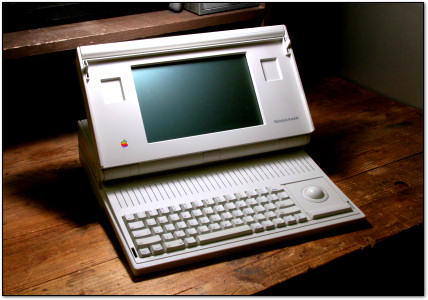
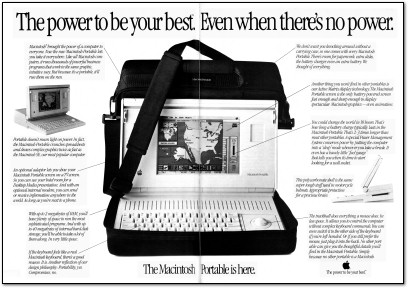
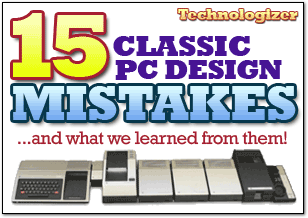
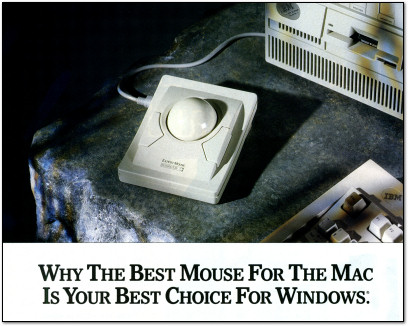
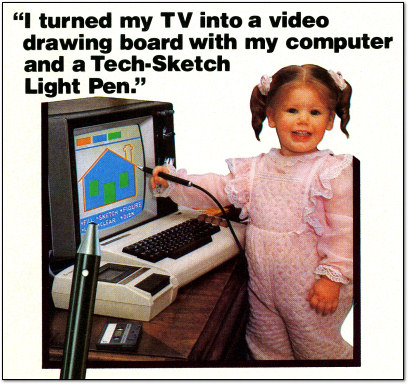
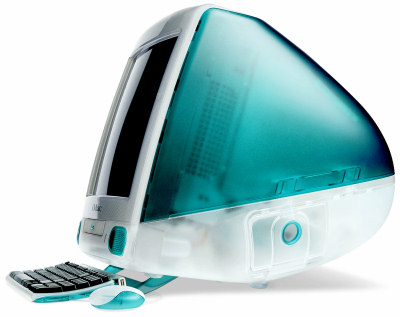
 For the last two years, Apple co-founder
For the last two years, Apple co-founder  Powered by a new 2.0 GHz 6502-compatible chip from WDC, the IIpc will retain full backward-compatibility with both Apple II and Apple IIgs software. In a further nod to the past, the computer will ship with three Apple II slots (in addition to the three PCI-X slots on the board) and will include user ports for Apple II keyboards, mice, paddles, and numeric keypads. The IIpc will support memory up to four gigabytes, although Wozniak plans on shipping the first model with only 1GB of RAM.
Powered by a new 2.0 GHz 6502-compatible chip from WDC, the IIpc will retain full backward-compatibility with both Apple II and Apple IIgs software. In a further nod to the past, the computer will ship with three Apple II slots (in addition to the three PCI-X slots on the board) and will include user ports for Apple II keyboards, mice, paddles, and numeric keypads. The IIpc will support memory up to four gigabytes, although Wozniak plans on shipping the first model with only 1GB of RAM. So what does Apple, Inc. and Steve Jobs think of all this? “Every time I talk to Steve, he tells me they still receive over 5,000 calls a day at Apple asking for an upgrade to the Apple IIe,” Wozniak writes, “So he’s happy that I’ll be getting them off his back.”
So what does Apple, Inc. and Steve Jobs think of all this? “Every time I talk to Steve, he tells me they still receive over 5,000 calls a day at Apple asking for an upgrade to the Apple IIe,” Wozniak writes, “So he’s happy that I’ll be getting them off his back.” According to Wozniak, The Apple IIpc will be available for sale on his website by “fourth quarter 2008” and will retail for $1666.66. But there might be delays. “Aside from the case we’re working on, the W65T64 is really the bottleneck in terms of getting this thing off the ground,” Wozniak writes. “The chip is going into production in June, so until then, I can’t launch.”
According to Wozniak, The Apple IIpc will be available for sale on his website by “fourth quarter 2008” and will retail for $1666.66. But there might be delays. “Aside from the case we’re working on, the W65T64 is really the bottleneck in terms of getting this thing off the ground,” Wozniak writes. “The chip is going into production in June, so until then, I can’t launch.”